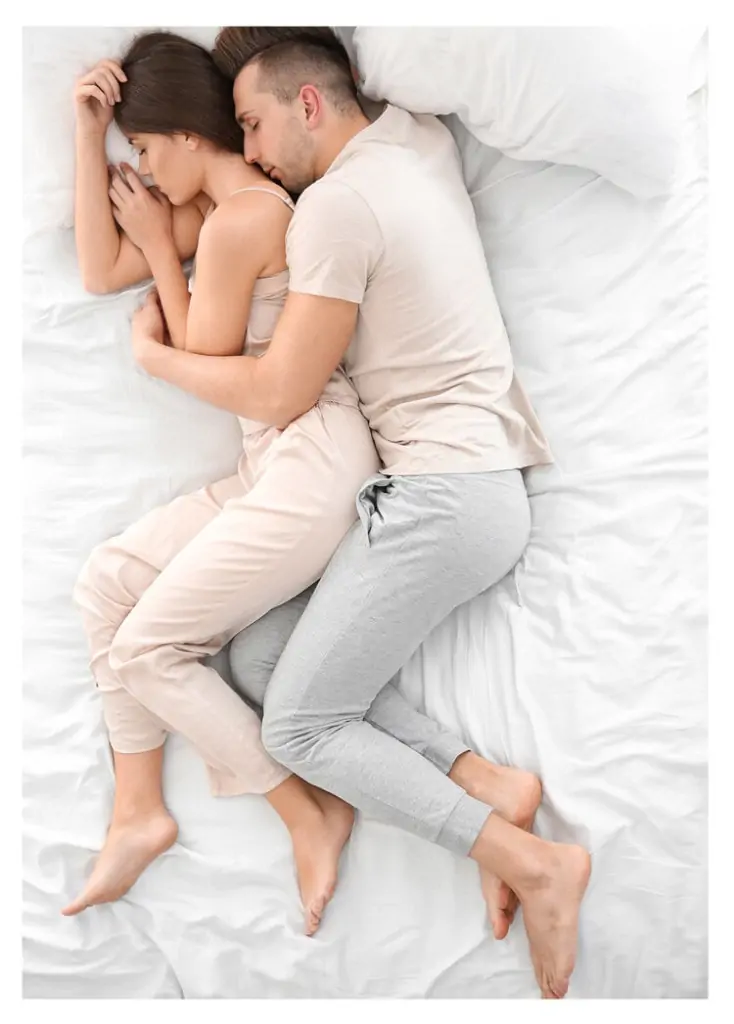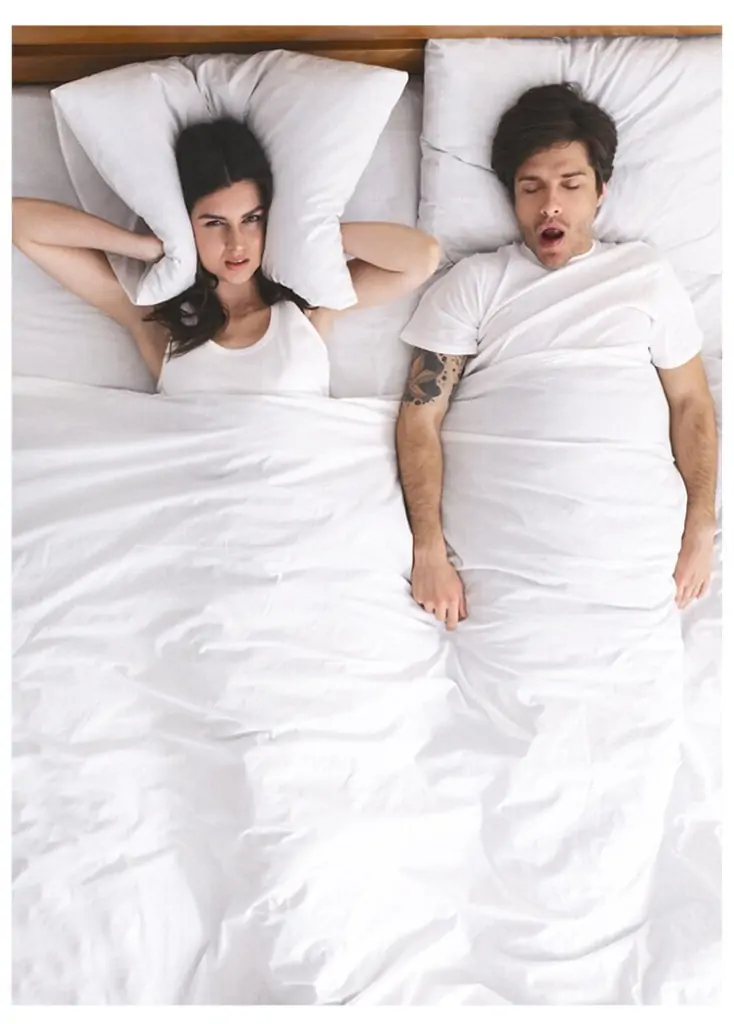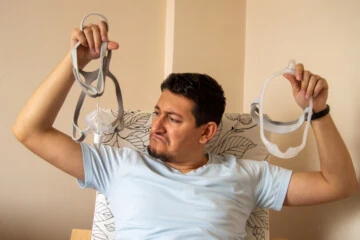
We all spend approximately one third of our lives sleeping and the way in which we sleep can say a lot about who we are. Oftentimes in relationships, co-sleeping with a partner means combining two very personalities and sleep styles into one bed. For some couples this presents no trouble at all, but for others, sharing a bed can be a real challenge and strain on the relationship. Why? When we sleep, our conscious mind takes a break and our subconscious mind takes over. As a result, the body language we use with our partners while sleeping can reveal a lot about what’s really going on in a relationship. “Even if you can’t or don’t articulate those things while you’re awake,” says Patti Wood, body language expert and author of “Success Signals, A Guide to Reading Body Language”
What do your and your partner’s sleep position say about you? Read on to discover what the 10 most common co-sleeping styles say about your relationship.

The Spoon
According to studies, 18% of couples sleep in this position. Relation psychologist Corrine Sweet says this sleep style shows a dynamic in which “one partner takes a protective stance over the other”.
And while the spoon can be sweet, it can also be a bit seductive. “It’s a very vulnerable position that’s sexual, but says, ‘I trust you,’” said Patti Wood.
The Loose Spoon
It’s normal for new couples to touch each other a lot more at the start of a relationship. Once things progress and mature, the novelty of sharing a bed can wear off and good quality sleep becomes the priority. The loose spoon is the perfect position for couples who still want to share affection while still maintaining good quality sleep. Paul Rosenblatt, author of “Two in a Bed: The Social System of Couple Bed Sharing“, describes the position as the big spoon saying “I’ve got your back, you can count on me,” but without being as sexual as spooning.


The Chase
The chase is like spooning, but with one significant difference – one person has drifted to the other side of the bed, while the other “chases” them while sleeping.
What does this position say about partners? According to Samuel Dunkell, author of Sleep Positions: The Night Language of the Body, it can mean one of two things: First, that one partner is playing hard to get and wants to be pursued. The second however, can be a sign of some trouble on the horizon. The author says that this could be something called “illegal spooning”, when one person retreats because they need more space.
The Tangle
This position is both very intimate but overall very rare in relationships. While some couples engage in this position at the start of their relationship when emotions are new and intense, maintaining this position long into a relationship doesn’t always mean the flame is still burning brightly. According to psychotherapist Elizabeth Flynn Campbell, it can also be a sign that a couple is too dependent on each other.


The Unraveling Knot
This position starts with The Tangle position, but then unravels gradually once the couple falls into deeper sleep.
And while this position is only adopted by about 8% of couples, it can be a sign of a strong relationship. Experts say it shows a balance between intimacy and independence that allows for the best of both worlds in a relationship.
The Liberty Lovers
Worried that there could be trouble between you and your partner because you sleep facing opposite directions? Don’t be! Studies have shown that liberty lovers are connected and secure in themselves as this position shows both closeness and independence in a relationship.
Other good news? There must be a lot of strong partnerships out there because this position is one of the most commonly used by couples, with 27% of them sleeping in this style.


The Back Kisser
While this position can mean a lot of good in your relationship, don’t sweat it if it doesn’t stick long term. According to Dr. Sweet this position means both partners are relaxed and comfortable with each other, however it’s more common in new couples than it is in those who have been together for many years.
The Nuzzle
This position in which a one partner rests their head on the other’s chest with legs intertwined, is seen early on in relationships and in rekindled romances too. It’s a highly nurturing position which creates a sense of safety. A high level of trust is seen in this sleep style and psychologist Shirley Glass says that this position has a “strengthening sense of comradeship and protection.”


The Nuisance
This position can mean both trouble for your relationship, and trouble for you or your partner’s health! Loud snoring can be highly disruptive to both partner’s sleep and their relationship. Additionally, it can be indicative of a much more serious problem if left unchecked – Obstructive Sleep Apnea.
Untreated, Obstructive Sleep Apnea has been linked to conditions such as high blood pressure, diabetes, obesity and heart failure. If you or your bed partner suffers from the effects of bothersome snoring, reach out to your nearest Snore MD clinic, where our sleep experts can help you solve your snoring problem and improve both your sleep quality and relationship. Contact us today for more information and to book in your free sleep consultation.




